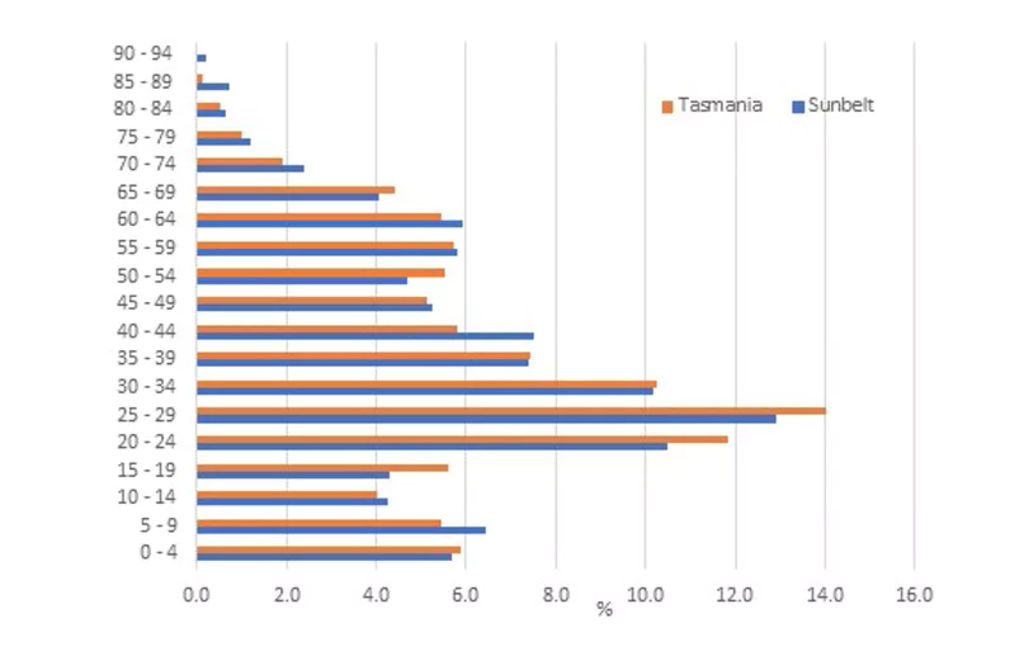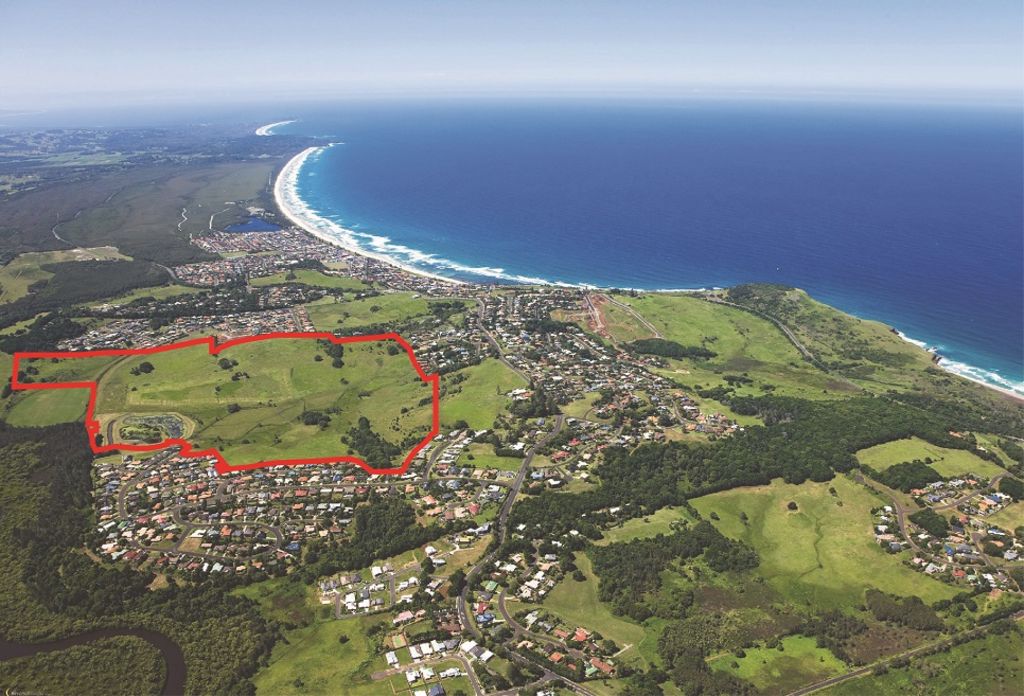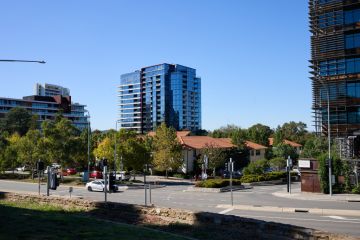The popular sea-change destinations attracting more young Australians

Leaving behind the big smoke for a simpler way of life on the coast has long been a right of passage for older Australians.
But it’s not just retirees who are selling up and slowing down, with traditional tree-change and sea-change destinations becoming increasingly popular with younger generations.
“There’s been a complete shift, five years ago we never would have anticipated these changes,” said Felicity Picken, a lecturer in social sciences at Western Sydney University.
“There was a really clear pattern of retirement to sea-change locations, and a high rate of youth drain in these areas. That just seemed like such an ingrained thing.”
Tasmania and the Sunbelt Coast around Byron Bay in northern New South Wales are two such locations, with an analysis of the latest Census data by Dr Picken and other experts, finding the three largest age groups moving to both areas in recent times were all under 35.
In the year before the Census, those aged 25 to 29 made up 14 per cent of people that moved to Tasmania, and 12.9 per cent of those who moved to the Sunbelt. New arrivals to both areas were then most likely to be aged 20 to 24, then 30 to 34.

Dr Picken said housing affordability and cost of living pressures were pushing people away from the big cities, spurred on by slow wage growth and the casualisation of the workforce.
“With stagnating wages, we know people aren’t getting as ahead as they would like … if big cities stop becoming places where you can earn lots of money, if those opportunities are eroded … people are going to look elsewhere for other values.”
“If you’re precariously employed in the city and finding it hard to keep your head above water, why not be precariously employed someone else where you can have a better lifestyle.”
- Related: Why young city slickers are looking for a change of pace
- Related: My friends said I was crazy: I made a sea-change at 25
- Related: When tree and sea changes don’t work out
While Tasmania was favoured by Melburnians, Dr Picken said the Sunbelt was more popular among Sydneysiders – with 23.7 per cent of recent migrants having previously lived in Greater Sydney.
Among those who’ve made the move are Nick and Hannah Bordin who moved from Sydney to Lennox Head, a half-hour drive from Byron Bay, to give their young family a better lifestyle.
After living in Sydney for eight years and having two kids, the pair thought it best to make the move north, back to Mrs Bordin’s home town.
“We thought the timing was right to move closer to family and friends, and improve our lifestyle by capitalising on the huge difference in house prices between Sydney and northern New South Wales,” Mr Bordin said.
“We realised we could have a brand-new family home near the beach for around the same price we sold our one bedroom unit for [in Sydney’s eastern suburbs],” Mr Bordin said. “Our kids now have a backyard to play in and we are all enjoying a more relaxed coastal lifestyle.”

They bought at Epiq Lennox Head, which Elders Real Estate agent Michael King said was proving popular with local young families and those relocating from interstate.
“There has been a real shift in the real estate landscape in recent years, with locals really committing to Lennox, long term, as a place to stay and raise a family,” he said.
“It’s [also] piqued the interest of buyers from as far as Brisbane, Sydney, and Melbourne who have recognised the incredible value of what’s on offer, particularly this close to the beach.”
Mr King said the roll out of the NBN meant more people had the opportunity to work remotely, while recent road upgrades had made it easier to commute to larger employment hubs.

After recent land releases in the master planned community – which will have about 480 homes when complete – sold out in under 24 hours, Clarence Property will take the unusual approach of selling the latest 41 homesites under the hammer on Saturday.
“Five years ago we would have been talking about a lot of coastal towns that were worried about the increasing aged population,” said Dr Picken. “This change is addressing some of the concerns council’s had about losing a tax base, losing professionals, not attracting families and a labour force that could service the ageing population.”
However, Dr Picken said the rise of the younger sea changer would present new challenges, such as the need for more employment opportunities in regional and coastal communities and the need to plan for areas that catered to the needs of interest and both younger and older generations.
We recommend
We thought you might like
States
Capital Cities
Capital Cities - Rentals
Popular Areas
Allhomes
More






